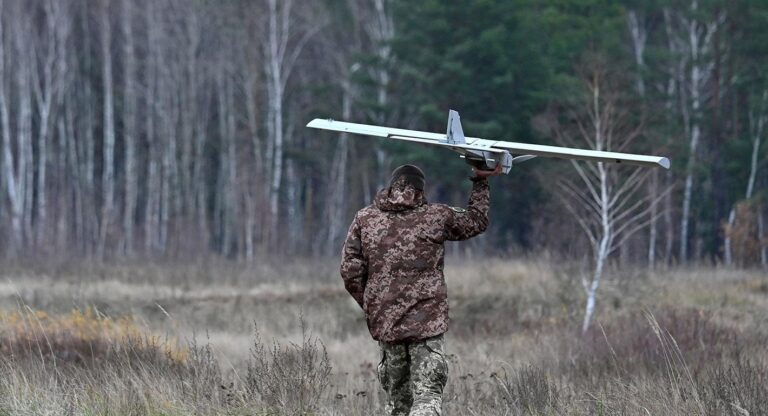A drone attack has been reported at an oil refinery in Russia’s Saratov region, according to Ukrinform. Details about the extent of the damage and any casualties remain limited as authorities continue to investigate the incident. This event marks a notable escalation in the ongoing tensions affecting critical infrastructure within the region. Further updates are expected as more information becomes available.
Drone Assault Strikes Oil Refinery in Russia’s Saratov Region Raising Security Concerns
A strategic oil refinery in Russia’s Saratov region was targeted in a drone attack, triggering alarms across national security circles. The unmanned aerial vehicles reportedly inflicted damage on critical infrastructure, disrupting operations and raising urgent questions about the vulnerability of vital energy assets. Local authorities quickly mobilized emergency response teams to assess the impact, while initial investigations pointed to a coordinated aerial assault as the cause of the incident. This unprecedented event underscores the increasing use of drones as tools for asymmetric warfare in contested regions.
The attack has prompted the Russian government to enhance its surveillance and defense capabilities around key industrial hubs. Experts highlight several immediate concerns:
- Security gaps in airspace monitoring systems that allowed drones to penetrate restricted zones.
- Potential escalation of unmanned attacks against critical infrastructure nationwide.
- Economic impact stemming from temporary disruption to oil production and supply chains.
| Parameter | Details |
|---|---|
| Date of Incident | April 24, 2024 |
| Location | Saratov Region, Russia |
| Target | Oil Refinery Facility |
| Damage Level | Moderate – Infrastructure impacted |
| Security Response | Enhanced aerial surveillance activated |
Analysis of Potential Impact on Regional Energy Infrastructure and Supply Chains
The recent drone strike on the oil refinery in Russia’s Saratov region has the potential to disrupt not only local operations but also the broader regional energy infrastructure. This facility plays a critical role in the processing and distribution of crude oil within the Volga Federal District, supplying both domestic industries and export channels. Damage to key processing units or storage facilities could lead to temporary shutdowns, reduced output, and increased maintenance costs. Given the interconnected nature of supply chains, even a localized incident may ripple outward, causing delays in fuel deliveries, heightened market volatility, and possibly triggering a revision of regional energy security protocols.
Key areas of concern include:
- Interruptions in crude oil transportation networks serving neighboring refineries.
- Potential backlog in petroleum product supply affecting end consumers.
- Increased reliance on alternative routes and storage reserves, which may strain current capacity.
- Heightened vigilance and security measures that could slow down logistical operations.
| Impact Element | Short-Term Effect | Long-Term Implication |
|---|---|---|
| Refinery Output | 25-40% reduction | Potential operational overhaul |
| Supply Chain | Increased delays | Supply diversification strategies |
| Market Prices | Temporary spike | Volatility spikes in energy commodities |
Recommendations for Strengthening Industrial Facility Defense Against Unmanned Aerial Threats
Industrial facilities must adopt a multi-layered approach to counter the growing threat posed by unmanned aerial vehicles (UAVs). This includes the integration of advanced radar and radio frequency detection systems capable of identifying and tracking unauthorized drones in real time. Equally important is the deployment of physical countermeasures such as net guns, drone jammers, and directed energy weapons that can neutralize drones without causing excessive collateral damage. Regular training of security personnel on recognizing drone threats and responding swiftly ensures that defenses remain vigilant and adaptive.
Investment in cyber-defense mechanisms that prevent hostile drones from hijacking connected infrastructure should be considered indispensable. Facilities can also benefit from establishing clear protocols for drone identification and communication with local airspace authorities. The following table summarizes key measures and their primary benefits:
| Defense Measure | Primary Benefit |
|---|---|
| Radar & RF Detection Systems | Early Warning of Incoming Drones |
| Physical Countermeasures | Immediate Threat Neutralization |
| Cybersecurity Protocols | Prevention of Drone Signal Hijacking |
| Staff Training | Enhanced Response Efficiency |
Industrial facilities should implement a comprehensive drone defense strategy by combining the following key measures:
- Radar & RF Detection Systems
- Provide early warning of unauthorized drones entering the area
- Enable real-time tracking for timely response
- Physical Countermeasures
- Include tools such as net guns, drone jammers, and directed energy weapons
- Allow for immediate and controlled neutralization of threats without collateral damage
- Cybersecurity Protocols
- Protect connected infrastructure from hostile drone hijacking attempts
- Secure communication channels and control systems against cyber intrusions
- Staff Training
- Equip personnel with skills to recognize drone threats and respond quickly
- Ensure preparedness and adaptability to evolving drone-related risks
Additionally, it’s beneficial for facilities to:
- Establish clear protocols for identifying drones and coordinating with local airspace authorities
- Continuously update defense mechanisms and training programs to keep pace with emerging drone technologies
By adopting this multilayered approach, industrial sites can effectively mitigate the risks posed by unauthorized UAVs and protect critical assets.
Wrapping Up
The reported drone attack on the oil refinery in Russia’s Saratov region marks a significant escalation in the ongoing conflict, highlighting the increasing use of unmanned aerial vehicles in targeting critical infrastructure. As investigations continue, officials have yet to confirm the extent of the damage or any potential casualties. The incident underscores the persistent tensions in the region and raises concerns over the security of vital energy facilities amid the broader geopolitical struggle. Further updates are expected as more information becomes available.




